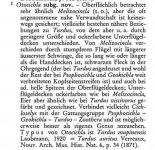It basically boils down to 'These splits are very old'
That's what I suspected. I vaguely remember reading something in the last year proposing several potential order splits based on age of divergence. I can't remember if it was a scientific article, a blog or possibly even a post here. I think there were a couple of others apart from the Strisores.










